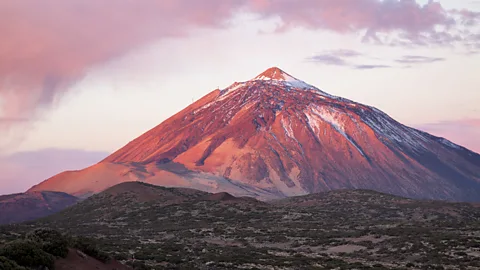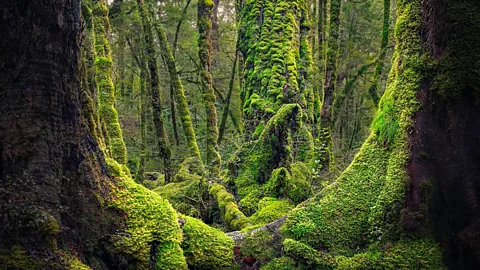Nagoro, village of Dolls
24_10
Remarkable lady, met her in the 70's
PUNTA GORDA TOWN, Toledo District, Wed. Oct. 9, 2024
Have you ever wondered who was Maura Lopez?
A big concrete sign at the PG town market bears the name, “Maura Lopez Market”. But few people know much about Maura Lopez and why the market was named after this remarkable Garifuna woman.
Maura Lopez, born August 23, 1948, was the daughter of Patricio Cayetano and Pearl Castillo. She had 10 children in her short 50 years. Her house was the beacon for all the children in the neighborhood. Darnelle Sterling was one of those children. “I learned to do housework, make tortillas, help with laundry. One day she took down the wet clothes that I had hung incorrectly. When I started to leave, she said, ‘If you leave, don’t come back.’” As a child who spent so much of her time at Maura Lopez’ home, she did not leave. Ms. Sterling recalls that Maura made her the woman that she is today. “She insisted that women needed to be able to stand on their own feet,” she said.
“My mother was a Garifuna advocate,” explained Carmen Jane Lopez Avila, 5th child of 10 and former director of the PG Ministry of Education. “She knew all the rituals. She taught the children in the neighborhood how to make the food and started the first Garifuna dance group, Yaguei, otherwise known as Yellow Tail, a bird that is found in Belize whose nest hangs from the tree and has yellow and white feathers.” In her younger years, she had won a scholarship to study dance in Jamaica.
Ms. Maura walked around town, selling fruit from Barranco, homemade conch fritters, soursop juice and baby girls’ clothes that were hand-sewn. Among her other accomplishments, she studied in Belize City to be a practical nurse, worked as a practical nurse at the PG Hospital, and worked briefly buying and selling fish from the Fishing Cooperative. In 1989, wearing a gown of her own creation, she was crowned Miss Elegant Belize and won a free trip to L.A. which she took with her husband, Winston Joseph Lopez.
“My mother was a no-nonsense person, a real go-getter,” her 7th child, Winston Gregory Lopez, recalls. “She was naturally talented and inspired others with the motto ‘Don’t give up.’ She wanted all of her children to have an education and asked us ‘What do you want to do?’ She insisted that no one could live in the house without getting a job or going to school.” Winston went on to be a math and science teacher for many years and principal of Julian Cho High School.
“I want to emphasize a little known side of Maura Lopez,” explained Darnelle Sterling. “She was a healer. During my unexpected last pregnancy, Maura said ‘This happened. Accept it. Count it as a blessing.’ She gave me massages and mixtures for the pain. She took care of me.”
So why was the Punta Gorda market named after this force of nature? Because, as the Mayor at the time, Fern Gutierrez, put it, Maura Lopez was the first entrepreneur of PG!
A Tolkien trail: Where to find the real-life Middle-earth
While
Tolkien's stories take place in the fictional realm of Middle-earth,
the
awe-inspiring landscapes of the books, films and TV shows are
closer than you
might imagine.
The first
book in J R R Tolkien's The Lord of the Rings trilogy,
The Fellowship of the
Ring, was released 70 years ago,
in the summer of 1954. However, that's not the
only
recent milestone for Tolkien's legendarium: the second season of the epic
TV series, The Rings of Power, was
released on 29 August 2024.
As befits
the ultimate epic fantasy series, the settings are gorgeous,
ranging from
bucolic, rolling countryside to plunging valleys and desolate deserts.
And
while Tolkien's stories take place in the fictional realm of Middle-earth,
the
awe-inspiring landscapes of the books, films and TV shows are not as
otherworldly as you might imagine. Many of them are based on
real-world
locations and visiting them brings to life both the landscapes
themselves and
the imaginary worlds they inspired Tolkien to create.
The Tolkien
Trail: Lancashire, England
While
writing The Lord of the Rings in the 1940s,
Tolkien lived for a while at
Stonyhurst College, a prestigious
boarding school in Lancashire where his son
was a teacher.
The elder Tolkien was known to walk often through
the woodlands
and rolling hills of the surrounding Ribble Valley,
and is thought to have
taken inspiration from the place while
creating the Shire, the rural homeland
of the hobbits
Today, fans can explore the area on the Tolkien Trail, which opened in 2002
and takes hikers through the very landscapes that inspired the author.
The route starts in the village of Hurst Green at the atmospheric
17th-Century Shireburn Arms pub, where Tolkien was a regular.
It then winds for around seven easy miles through undulating farmland,
past the grand buildings of Stonyhurst College, and across
historic landmarks like Cromwell's Bridge, an overgrown packhorse
bridge once used by Oliver Cromwell in the English Civil War.
Although Tolkien didn't directly document the influence of places along the trail,
there are several sources of likely inspiration.
The route passes the stately home Hacking Hall where,
during Tolkien's time, there was a wooden ferry barge,
the Hacking Ferry, that carried people across the River Ribble.
In The Fellowship of the Ring, the Bucklebury Ferry
(also outside a stately home, Brandy Hall) carries the hobbits across the Brandywine River
in similar fashion while they
are fleeing a fearsome spectral horseman.
The local landowning family near Stonyhurst, meanwhile,
were called the Shireburns – and the similarly named River Shirebourne
appears in Tolkien's geography of Middle-earth. Tolkien's maps, meanwhile,
depict the convergence of three rivers – the Shirebourne, Withywindle and Brandywine
– in a way that exactly mirrors the meeting of the Hodder,
Ribble and Calder rivers here in Lancashire. In addition,
St Mary's Church in the nearby village of Newchurch-in-Pendle
bears an unusual feature: an eye-shaped carving halfway up the tower,
known as the Eye of God, which resembles the all-seeing
Eye of Sauron from the Lord of the Rings books and movies
Cheddar Gorge: Somerset, England
Most of the real-life places associated with Tolkien's imaginings of Middle-earth are
based on educated guesswork, but there is one place that the writer himself
confirmed as a real-life inspiration for The Lord of the Rings.
Tolkien and his wife Edith married in 1916, and honeymooned in the
Somerset village of Clevedon. While they were there, they paid a visit to
one of the most jaw-dropping landscapes in Britain: Cheddar Gorge,
a sheer limestone valley, pockmarked with caves whose walls are bejewelled
with intricate rock formations, stalagmites and stalactites.
The honeymooning author – always married, at least in part, to his work –
was taking notes, and in 1971 he confirmed in a private letter
(published in 1981 as part of The Letters of J.R.R. Tolkien)
that the caves of Cheddar Gorge inspired the Glittering Caves of Helm's Deep in The Lord of the Rings.
Visit Gough Cave, the most famous of the caves at Cheddar, and you'll likely
recognise elements of Tolkien's description of the Glittering Caves:
Stow-on-the-World: Gloucestershire, England
Tolkien was a deeply religious man, and although he always refuted the
theory that The Lord of the Rings was a Christian allegory, the work is infused with spirituality.
Tolkien spent his professional life as a professor at the University of Oxford, and he was known
to have often visited the nearby Cotswolds, a picturesque area of golden-stone villages,
gently rolling hills and seriously photogenic churches.
One of those churches, St Edward's Church in the market town of Stow-on-the-Wold,
has long been earmarked as a likely source of inspiration for Tolkien.
Its north door is among the most photographed doors in the country: carved from heavy, studded wood,
crowned with an arching architrave and hung with an oil lamp.
Its most striking feature is the two yew trees that flank the doorway, planted three centuries ago and now huge,
twisted and gnarled, having grown into the structure of the church itself.
Tolkien accompanied his writings with beautiful hand-drawn artworks, one of which depicts the Doors of Durin,
a hidden entrance to the inside of a mountain that harbours the Dwarf city of Khazad-dûm.
Tolkien’s drawing, although stylised, is almost identical to the north door of St Edward's Church,
from the trees that bookmark the entrance to the lamp that hangs above it –
giving rise to the longstanding rumour that this is where he found inspiration for his mythical mountain doors.
 Getty Images
Getty ImagesTeide National Park: Tenerife, Spain
The moon-like deserts of Tenerife feature prominently in the new series of The Rings of Power,
as a barren wasteland through which the mysterious Stranger, a wizard who has lost his memory,
is travelling with two hobbits. Tenerife's Indigenous Guanche people traditionally believed that Teide
was the gateway to the underworld domain of malevolent deity Guayota – and it's not hard to see why,
with its fierce winds, searing heat and dusty plains dotted with gnarled, skeletal trees. It's unsurprising
that Teide was chosen as the real-life setting for the realm of Rhûn, which, in Tolkien's works,
is a mysterious region of moral corruption and dark sorcery.
More like this:
• The surprising ancient roots of The Lord of the Rings
• In Alpine villages, Hobbits lurk
• The Rings of Power review: A visually staggering, flawed epic
Mount Teide is an active volcano (it hasn't erupted since 1909) and volcano treks are a popular activity in the park – although there is also a cable car if you're feeling less adventurous.
 Getty Images
Getty ImagesFiordland: South Island, New Zealand
The entire The Lord of the Rings film series was famously shot in New Zealand,
the homeland of director Peter Jackson. The rivers and woodlands of Fiordland –
a region of green-sloped, snow-capped mountains that plunge to glacier-carved inlets, known as "sounds"
feature prominently in the movies. This is New Zealand's most unspoilt and biodiverse region,
so it's no surprise Jackson chose it to represent some of the wildest parts of Middle-earth.
The woodlands of Fiordland doubled as Fangorn Forest, home to the mysterious Ents:
giant talking trees who help the hobbits in their fight against the dark wizard, Saruman.
Other Fiordland locations that appear in the films include the Waiau River,
which stood in for Tolkien's River Anduin, the longest river in Middle-earth,
that appears in the very first aerial shot of The Fellowship of the Ring.
To explore Fiordland, most visitors base themselves in the lakeside town of Te Anau,
home to a wide range of hotels, restaurants and tour operators leading
hiking and boating trips into the Fiordland National Park.











